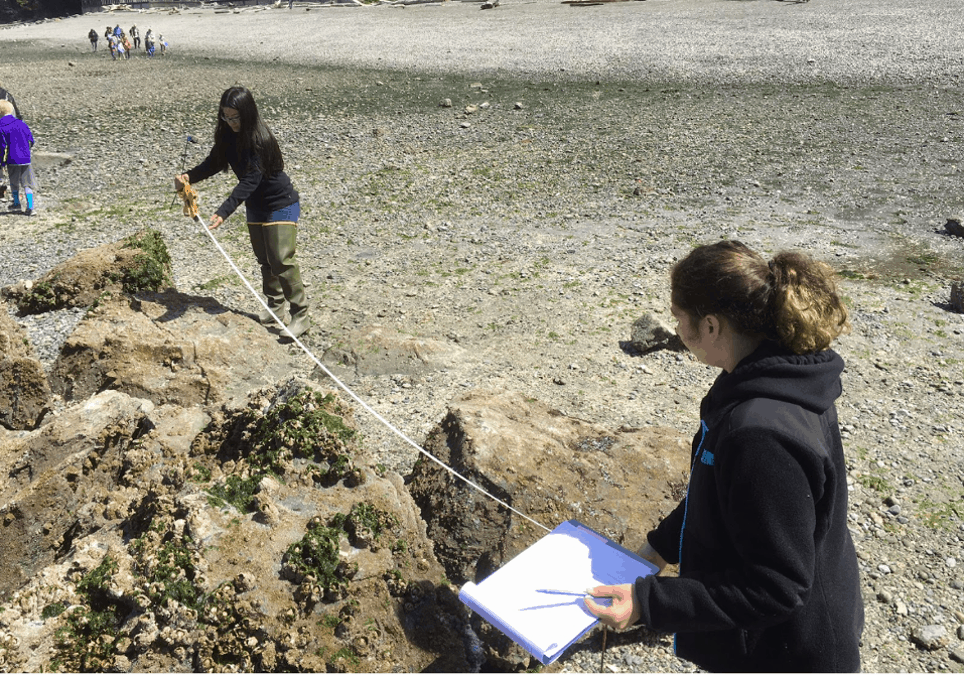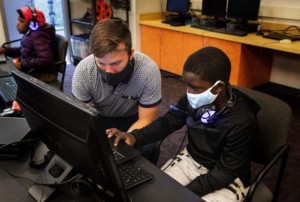Powerful School-Community Partnership Brings Learning to Life

By Joe Weiss
Washington’s Highline Public School District provides an example of place-based learning made possible by powerful partnerships between the school district and local community resources.
The Seattle Aquarium and the City of Burien play roles in a program that offers high school students a mix of marine science and practical skills.
Students in Highline’s Marine Science Technology program learn in a hands-on environment. They study marine sciences including marine geology, physical oceanography and marine biology, and learn practical skills such as navigation, marine safety, watercraft stability and damage control, vessel terminology and marlinspike seamanship (the art of knot-tying, splicing and working with cable).
At the end of the school year, students complete a two-day cold water survival class that earns them U.S. Coast Guard certification. They can also earn higher education credits.

The Puget Sound Skills Center, a high school that Highline runs in collaboration with three other school districts, offers the program in a two-story marine technology lab on the shore of Burien’s Seahurst Park. The waterfront facility includes a classroom, student lockers, wet lab, boat ramp, salmon hatchery and open seawater aquariums.
This unique location allows students to observe marine plants and animals, conduct an annual beach survey, net plankton from 14-foot skiffs, collect sediment samples for analysis in the lab and manage the state-licensed salmon hatchery.

Students work alongside biologists from the Seattle Aquarium each spring to conduct the annual beach survey. They gain valuable experience in intertidal ecology, invertebrate taxonomy and survey methodology. Student work needs to meet accepted scientific protocols. This high standard of data collection is especially satisfying for the
Student work needs to meet accepted scientific protocols. This high standard of data collection is especially satisfying for the students, since local scientific organizations will use their work to monitor changes in the relative abundance of flora and fauna.
As part of the partnership with the Seattle Aquarium, each student receives a free pass to visit the aquarium as often as they wish throughout the school year and to bring a friend or family member each time.

An active advisory committee made up of marine scientists and professional mariners provides input on the curriculum and keeps the level of instruction current with industry standards. Advisory committee members also sponsor field trips, provide equipment, serve as guest lecturers, conduct mock interviews and act as mentors for the students.
Graduates of the program choose a variety of career paths and solid opportunities are plentiful. In recent years, students have joined the United States Coast Guard (USCG), signed on as seamen with the National Oceanographic and Atmospheric Administration and enrolled in the Seattle Maritime Academy to gain more advanced skills and USCG certification.
Students with career goals in the sciences have gone on to colleges and universities to study fisheries or oceanography. Graduates have become marine biologists, fisheries biologists, oceanographers and marine geologists.
This blog is part of our “Place-Based Education” blog series. To learn more and contribute a guest post for the series, check out the PBE campaign page. Join in the conversation on social media using #PlaceBasedEd. For more on Place-Based Education, see:
- The Past, Present and Future of Place-Based Learning
- 20 Schools and Networks That Educate With A Sense of Place
- Cool Schools: 3 High School Options in Tacoma
- 6 Starting Points for Place-Based Learning
Joe Weiss is an instructor in the Marine Science Technology program in the Highline Public School District. Follow them on Twitter: @HighlineSchools
Stay in-the-know with all things EdTech and innovations in learning by signing up to receive the weekly Smart Update.





Gary Gruber
As a big fan and proponent of Place Based Learning I am heartened every time I see such a great illustration. So many schools do not take advantage of the many and rich resources in their own communities. What it take to get beyond the walls is an expanded vision of what and where school is and watch students connect with community resources that can inform, direct and inspire them.
Thank you for sharing, Joe.